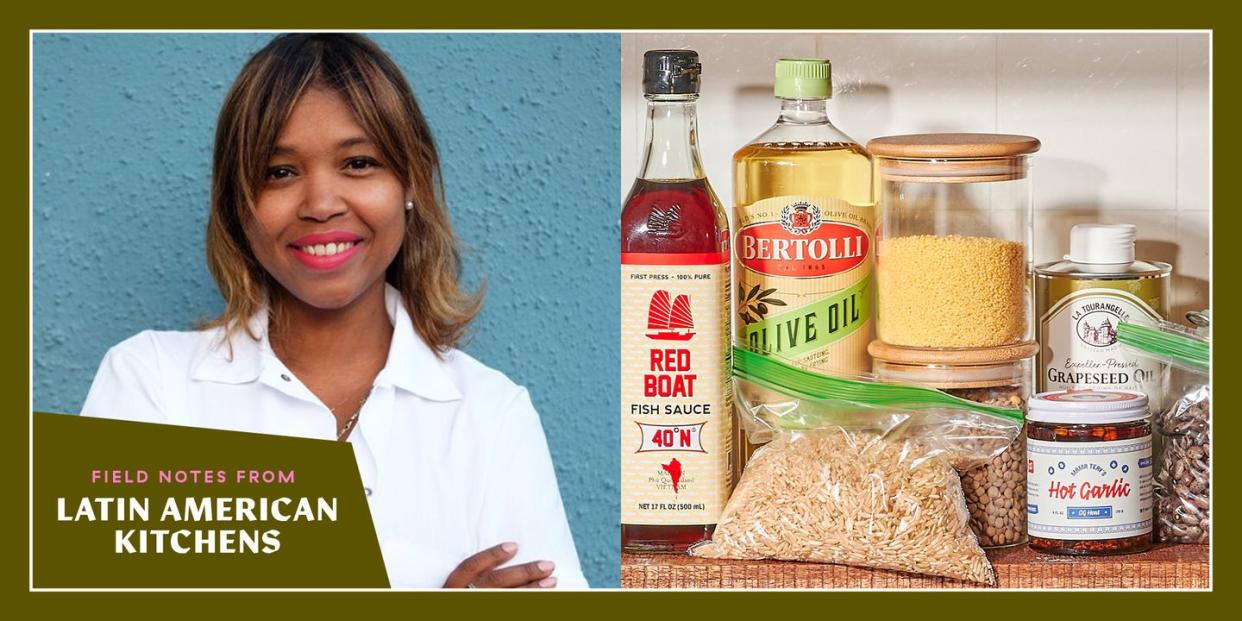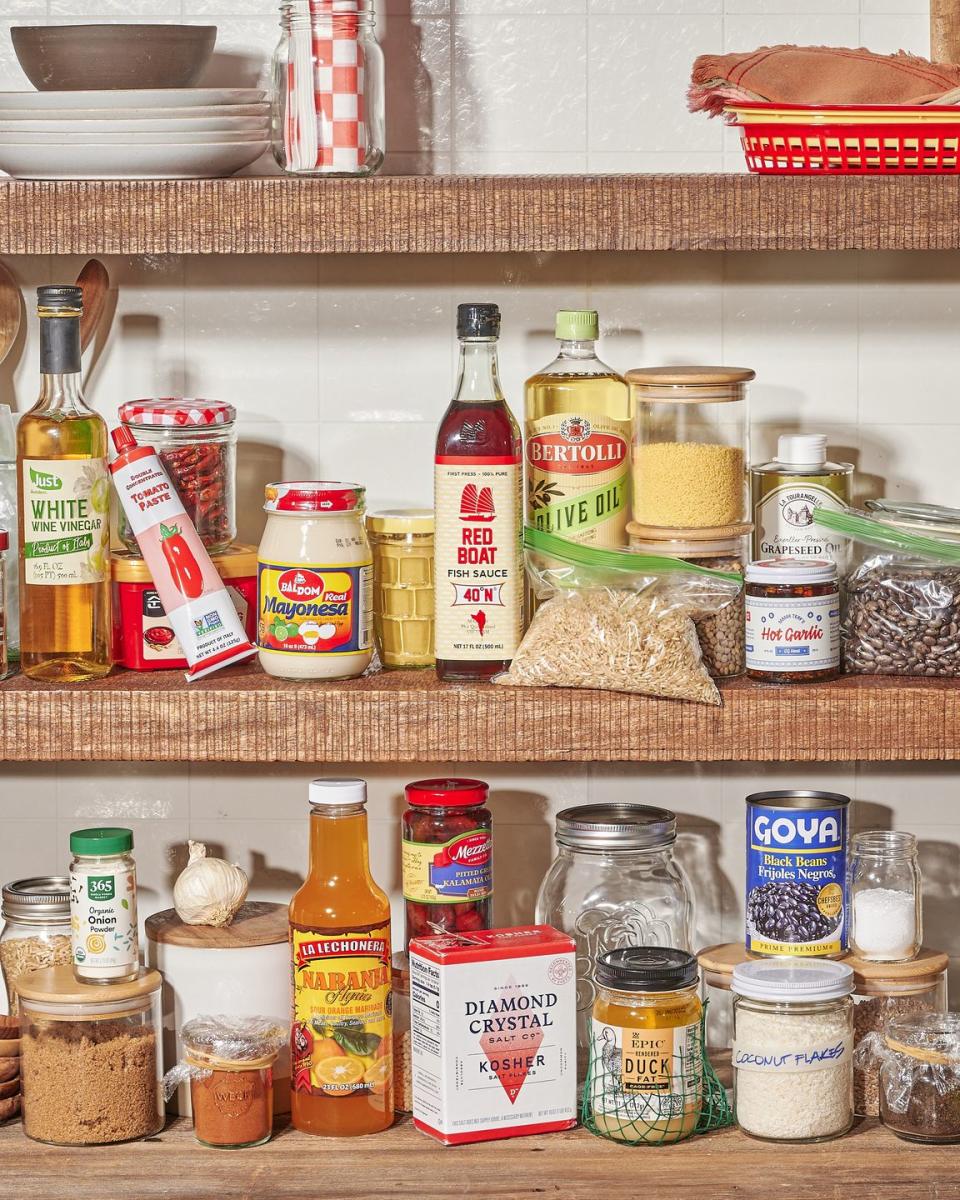The Best Latin American Ingredients You Can Buy

"Hearst Magazines and Yahoo may earn commission or revenue on some items through these links."
¡Spicy! When we talk about Latin American food, that’s the word that comes to mind. And while it’s often associated with the fiery hot chiles, it also reflects dynamic cuisines layered with spices.
Rice dyed gold by achiote, smoky cumin-marinated meats, salads awash in a verdant cilantro confetti—Latin American cuisine is wonderful. And it’s wonderful because it’s so varied and dynamic. But despite being an expansive and diverse population, certain ingredients are beloved across the region.
María Mercedes Grubb is a Dominican chef based in Puerto Rico. Raised in San Juan, she graduated from the French Culinary Institute in New York City and went on to work under James Beard Award-winning Chef Gabriel Kreuther at The Modern, Bar Basque, and Maialino.
Returning to Puerto Rico in 2011, María started UDC (Underground Dining Club), a pioneering pop-up restaurant with an emphasis on seasonal cooking, and opened the restaurant and whiskey bar Gallo Negro. In 2019, she became the first woman in Puerto Rico’s food industry to be nominated for a Best Chef award by the James Beard Foundation. Recently, María has been spearheading the food program at the Decanter Hotel in Old San Juan and serving as acting Executive Chef at the Taberna Medalla beer garden in Condado, Puerto Rico.
María’s background features prominently in her pantry, which is a fusion of her deep cultural roots and her chef training. She has standard ingredients you’d imagine—white rice, olive oil, dried beans, cumin, and coriander—but she’s replaced the more traditional lard for duck fat. She loves the pungent yet delicate flavors of Southeast Asia, so you’ll also find fish sauce and chili crisp.
Here’s what María keeps in her pantry, with a few of her secret ingredients.

Ground annatto, also known as achiote, is one of Maria’s most treasured ingredients. It adds a vibrant color to dishes—it's crucial in cochinita pibil—and adds a bit of acidity to round out stews and rice dishes. And for María, the color it adds to dishes becomes a visual cue of its deliciousness.
Oregano is among the most common herbs across Latin America. And while Italian dried oregano is mostly commonly available, María recommends the Dominican variety, which is more flavorful, pungent, and minty.
Cumin and coriander feature prominently across the region, as do nutmeg, cinnamon, and cloves. María prefers to source all her spices from Burlap and Barrel and Spicewalla due to their fair business practices and high quality. She also typically goes for whole spices, which she toasts and grinds herself at home. A few of her secret weapons are Burlap and Barrel Cinnamon Tree Leaves, Cobanero Chili Flakes, and ground black lime.
Above all, salt is key to cooking around the world. María goes with Diamond Kosher salt for everyday cooking, and Maldon salt flakes for a fancy, salty crunch.

Olive oil is crucial across Latin America, but typically not the cold-pressed, grassy olive oils of Italian or Greek cuisines. María insists on a clear olive that is mild and slightly fruity in flavor, which in her family is called “extra virgin lite.” And while it’s the most commonly used oil, alongside corn or vegetable oil used for frying, María prefers grapeseed.
One of the key techniques for preparing meat across Latin America is marinating, which tenderizes and infuses meat with intense flavor (see Jennifer Zyman’s carne asada). And one of Maria’s signature marinade ingredients is naranja agría, or sour orange juice, which adds a mildly sweet tanginess. It’s typically available in grocery stores in the Latin American or international pantry section, though Miami-based La Lechonera makes a finer version.
Vinegar is used extensively in Latino cuisine, as a dressing, marinade, and seasoning. White wine is prominent, but María prefers red or white wine vinegar.
As a chef, María is obsessed with Asian flavors, which she often blends with Caribbean and Latin American ingredients. Red Boat fish sauce is always in her pantry, as are Little Goat and Mama Teavs chili crisps and Korean gochujang.

Rice and beans are a religion across Latin America (see Leticia Moreinos Schwartz's recipe), with seemingly endless variations. Whether served together or apart, they are comforting staples that grace Latin American tables daily, and as simple as they can be María takes just as much care with their ingredients.
Varieties of red kidney, white, pinto, and black beans are most common across the region, and María sources hers from Rancho Gordo. And while short grain rice is more common in Puerto Rico and across the region, she prefers long grain white rice and jasmine rice.
Tomatoes feature prominently in Latin American food, and María always has San Marzano whole canned tomatoes and tomato paste in the pantry. Dried coconut flakes and coconut milk are also always on hand.

Ketchup is clutch in the Latino pantry, particularly for María, who has a teenage son. One of María’s favorite dishes is arroz a caballo, or rice topped with a fried egg.
One of the unsung heroes of the Latin American kitchen is mayonnaise. Sandwiches are slathered with it, and it's necessary for potato and macaroni salads. It’s also a key ingredient in Mexican elote. María prefers Dominican mayonnaise, when possible, but alternately, she’s a Duke’s fan. And in keeping with her love of Asian flavors, she keeps Kewpie on hand.
Mustard is also a personal favorite of María’s; it’s a crucial ingredient for adding a kick to her food. She typically has several different brands in her fridge of grainy Dusseldorf style, Dijon, and sharp, bright yellow mustard for Cuban sandwiches.
In addition to the spices, sauces, and dry goods that are key to the region's cuisine, so too are alliums and aromatics. Onions—white, yellow, and red, celery, cilantro or recao (cilantro’s saw-toothed earthy cousin), and peppers such as ají dulce.

You Might Also Like

